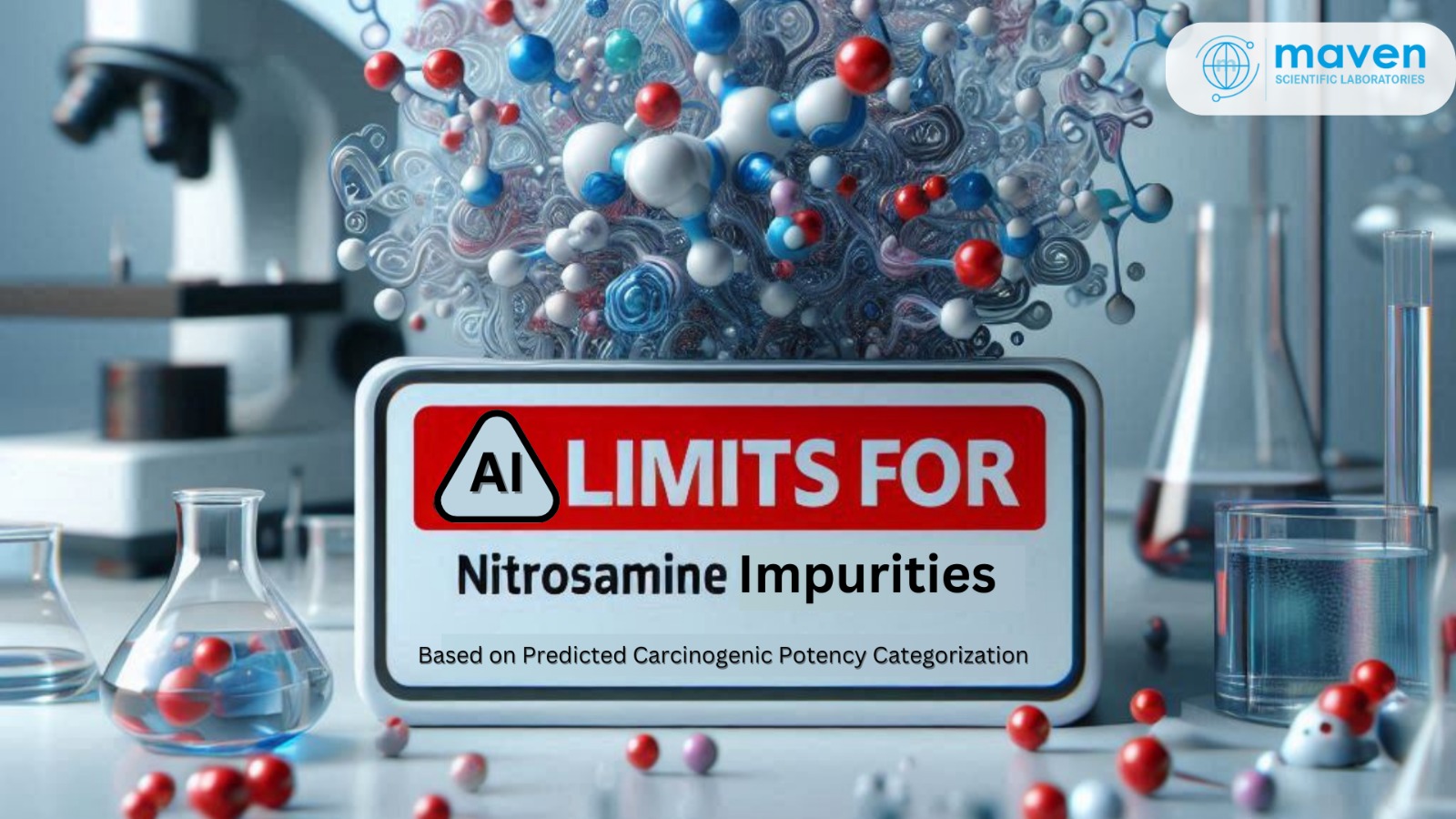
Recommended AI Limits Based On Predicted Carcinogenic Potency Categorization
The FDA has developed a sophisticated methodology for setting acceptable intake (AI) limits for Nitrosamine Drug Substance Related Impurities (NDSRIs) in drug products. This advanced approach relies on predicting the carcinogenic potency of NDSRIs based on their structural features. By categorizing these impurities into distinct potency groups, the FDA assigns corresponding AI limits to manage potential risks.
Introduction to Predicted Carcinogenic Potency Categorization
The FDA's methodology assumes that the α-hydroxylation mechanism of metabolic activation plays a crucial role in the carcinogenic and mutagenic responses of nitrosamines. In this context, structural characteristics that either facilitate or hinder this activation mechanism will significantly impact the carcinogenic potency of the NDSRI.
The categorization approach leverages data from established databases such as the Carcinogenic Potency Database (CPDB) and the Lhasa Carcinogenicity Database (LCDB), alongside recent scientific literature on nitrosamines. This data is used to identify molecular substructures associated with increased or decreased carcinogenic potential.
Methodology and Application
The FDA's methodology assigns relative weights to activating and deactivating structural features of NDSRIs to predict their carcinogenic potency. The approach is specifically designed for NDSRIs where the N-nitroso group is flanked by carbon atoms. It excludes compounds such as N-nitrosamides, N-nitrosoureas, and N-nitrosoguanidines, as well as nitrosamines with the N-nitroso group within an aromatic ring (e.g., nitrosated indoles).
To determine the AI limits, the FDA evaluates each NDSRI based on its structural features and their impact on carcinogenic potency. This predictive model helps in setting conservative limits for drug products and aids in developing methods for confirmatory testing of impurity levels.
Recommended AI Limits Based on Predicted Carcinogenic Potency Categorization
The FDA categorizes NDSRIs into five distinct potency groups, each associated with a specific recommended AI limit:
- Category 1: NDSRIs in this category are predicted to have carcinogenic potency comparable to N-nitrosodiethylamine (NDEA), the most potent nitrosamine tested. The recommended AI limit for Category 1 is set at 26.5 ng/day. This limit reflects a conservative lower bound for the range of potencies within this category, ensuring a robust safeguard against potential risks.
- Category 2: NDSRIs assigned to Category 2 are expected to have carcinogenic potency similar to that of N-nitrosodimethylamine (NDMA) and 4-(methylnitrosamino)-1-(3-pyridyl)-1-(butanone) (NNK). The recommended AI limit for Category 2 is 100 ng/day, which aligns with the AI limits for NDMA (96 ng/day) and NNK (100 ng/day). This limit is designed to accommodate NDSRIs with carcinogenic potencies comparable to these well-studied nitrosamines.
- Category 3: This category includes NDSRIs with lower carcinogenic potency than Category 2, often due to the presence of weakly deactivating structural features. The recommended AI limit for Category 3 reflects a 4-fold decrease in carcinogenic potency from Category 2. Although specific values are not provided, this adjustment ensures a more tailored risk assessment.
- Category 4 and Category 5: NDSRIs in Categories 4 and 5 are predicted to have low carcinogenic potency due to factors such as unfavorable metabolic activation pathways or favored clearance mechanisms. Both categories have a recommended AI limit of 1500 ng/day, which aligns with the threshold of toxicological concern (TTC) per ICH M7(R2). This limit ensures a high margin of safety for compounds with reduced carcinogenic potential.
Importance and Limitations
The predicted carcinogenic potency categorization offers a conservative estimate based on the best available science. This approach provides a science-based solution for setting AI limits but is not universally applicable. The FDA may continue to set AI limits based on compound-specific assessments or read-across analysis from surrogate compounds. Manufacturers should adhere to specific AI limits communicated by the FDA for their compounds.
Future Directions
The FDA is actively collaborating with international regulatory authorities to refine and validate this predictive approach. The goal is to minimize the impact of nitrosamine impurities on the drug supply while maintaining patient safety. As scientific knowledge evolves, the methodology for predicting carcinogenic potency and setting AI limits will be updated to reflect new data and advancements in research.
Manufacturers and applicants are encouraged to stay informed about FDA guidance and be prepared to adapt to new scientific findings. Alternative approaches may be used if they comply with applicable regulations and provide equivalent safety assurances.
Conclusion
The FDA's predictive carcinogenic potency categorization represents a sophisticated and structured method for setting AI limits for NDSRIs. By applying this methodology, manufacturers can better manage nitrosamine impurities and ensure the safety of drug products. This approach reflects ongoing advancements in scientific understanding and regulatory practices, ensuring that drug products remain safe for consumers and that regulatory strategies continue to evolve with the latest scientific insights.







